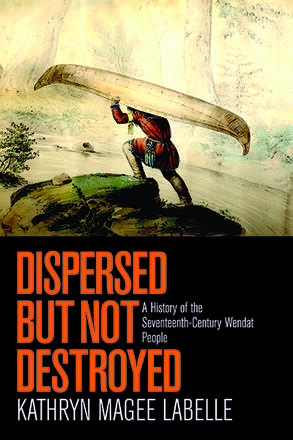
Dispersed but Not Destroyed
A History of the Seventeenth-Century Wendat People
A beautifully written tale of struggle, dispersal, and survival that turns the story of the Wendat conquest on its head.
Description
Situated within the area stretching from Georgian Bay in the north to Lake Simcoe in the east, the Wendat Confederacy flourished for two hundred years. By the mid-seventeenth century, however, Wendat society was threatened by European disease and Iroquois attacks. Dispersed but Not Destroyed depicts the creation of a powerful Wendat diaspora in the wake of their dispersal and throughout the latter half of the century. Turning the story of the Wendat conquest on its head, this book demonstrates the resiliency of the Wendat people and writes a new chapter in North American history.
Awards
- Short-listed, Sir John A. Macdonald Prize, Canadian Historical Association 2014
- Winner, John A. Ewers Award, Western History Association 2014
- Short-listed, Aboriginal History Prize, Canadian Historical Association 2014
- Winner, CSN-REC Book Prize, Canadian Studies Network – Réseau d’études canadiennes 2013
Reviews
… the devastating Haudenosaunee attacks in 1649 have long shaped the ways scholars have narrated and understood the past of the Wendat people … So dramatic was this dispersal that many historians and anthropologists have portrayed it as the end of Wendat history and any meaningful Wendat peoplehood. Kathryn Magee Labelle forcefully challenges, and convincingly demolishes, this “discourse of destruction” (p. 196) in her aptly-named Dispersed but Not Destroyed … A topnotch ethnohistory, Labelle’s book … draws a complex yet coherent picture of the vibrant Wendat diaspora. At the same time it prompts broader questions about power, society, and narrative in the study of seventeenth-century North America.
- Sami Lakomäki, University of Oulu
A nuanced and highly readable account of the Wendat people’s turbulent history, which challenges the notion of the Wendat’s disappearance as a cohesive community in the wake of the Iroquois attacks of the mid-seventeenth century.
- Roger M. Carpenter, Department of History, University of Louisiana Monroe